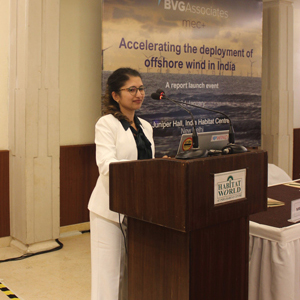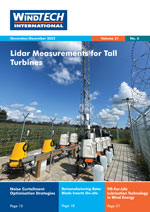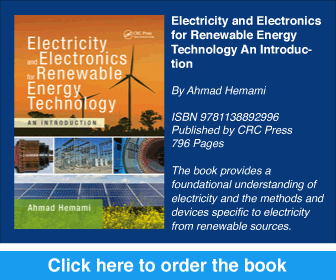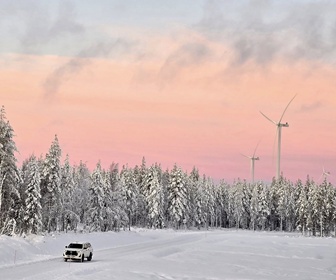- Category: View from Inside
 In 2023, wind power generation surpassed natural gas for the first time in the European Union (EU), reaching 18% of the electricity mix. [1] In 2024, the EU recorded the cleanest electricity mix ever, with wind and solar generating half of Europe’s electricity followed by nuclear at 24%. By 2030, solar will have reached a capacity of 600GW followed by 590GW for wind. All these new solar panels and wind turbines will need to be connected to the power grid, an infrastructure that dates back to the 1980s, when renewables were almost non-existent and the power system relied on massive, centralised power plants.
In 2023, wind power generation surpassed natural gas for the first time in the European Union (EU), reaching 18% of the electricity mix. [1] In 2024, the EU recorded the cleanest electricity mix ever, with wind and solar generating half of Europe’s electricity followed by nuclear at 24%. By 2030, solar will have reached a capacity of 600GW followed by 590GW for wind. All these new solar panels and wind turbines will need to be connected to the power grid, an infrastructure that dates back to the 1980s, when renewables were almost non-existent and the power system relied on massive, centralised power plants.
By Savannah Altvater, Head of Unit of Distribution and Market Facilitation, Eurelectric, Belgium
- Category: View from Inside
 In October 2023, the European Commission published its Wind Power Package, outlining 15 actions to enhance the competitiveness of Europe’s wind supply chain. The European Commission, the European Investment Bank (EIB) and European Union (EU) member states have made initial progress in implementing the Package, but further efforts are required to meet the EU’s 2030 energy security and climate targets.
In October 2023, the European Commission published its Wind Power Package, outlining 15 actions to enhance the competitiveness of Europe’s wind supply chain. The European Commission, the European Investment Bank (EIB) and European Union (EU) member states have made initial progress in implementing the Package, but further efforts are required to meet the EU’s 2030 energy security and climate targets.
By Phil Cole, Director of Industrial Affairs, WindEurope, Belgium
- Category: View from Inside
 The distributed renewable energy sector has immense potential to transform lives and economies across Africa and set a model for emerging economies worldwide. However, a key challenge remains: how do we measure the impact of these innovations?
The distributed renewable energy sector has immense potential to transform lives and economies across Africa and set a model for emerging economies worldwide. However, a key challenge remains: how do we measure the impact of these innovations?
By Dennis Nderitu, Energy Systems Manager, GEAPP
- Category: View from Inside
 In the pursuit of sustainability, industries across all sectors worldwide are undergoing a transformative shift from a linear to a circular economy system of production and consumption. The wind sector is not an exception and plays an important role not only in the renewable transition but also in the representation of the global drive towards embracing a circular economy approach.
In the pursuit of sustainability, industries across all sectors worldwide are undergoing a transformative shift from a linear to a circular economy system of production and consumption. The wind sector is not an exception and plays an important role not only in the renewable transition but also in the representation of the global drive towards embracing a circular economy approach.- Category: View from Inside
 In our race towards a more sustainable energy future, the cyber resilience of energy infrastructure, including wind power, has become imperative. Some 71% of power and renewables professionals globally expected their organisations to increase investment in cybersecurity throughout 2023, according to DNV’s Energy Cyber Priority research.
In our race towards a more sustainable energy future, the cyber resilience of energy infrastructure, including wind power, has become imperative. Some 71% of power and renewables professionals globally expected their organisations to increase investment in cybersecurity throughout 2023, according to DNV’s Energy Cyber Priority research.- Category: View from Inside
 India, with its ambitious goal of achieving net-zero emissions by 2070, is emerging as a pivotal player in the offshore wind (OSW) energy sector. Demonstrating a robust commitment to renewable energy transition, the nation has set an ambitious OSW leasing target of 37GW by 2030. Initiatives like the Facilitating Offshore Wind in India (FOWIND) project and the First Offshore Wind Project of India (FOWPI) have been instrumental in conducting extensive research, laying the groundwork for the future development of OSW projects. The government’s proactive stance is evident through the publication of comprehensive reports, successful attraction of investor interest, and the initiation of essential frameworks. Collaborations with international entities such as the European Union and the World Bank Group have further enriched the landscape by bringing valuable expertise and knowledge.
India, with its ambitious goal of achieving net-zero emissions by 2070, is emerging as a pivotal player in the offshore wind (OSW) energy sector. Demonstrating a robust commitment to renewable energy transition, the nation has set an ambitious OSW leasing target of 37GW by 2030. Initiatives like the Facilitating Offshore Wind in India (FOWIND) project and the First Offshore Wind Project of India (FOWPI) have been instrumental in conducting extensive research, laying the groundwork for the future development of OSW projects. The government’s proactive stance is evident through the publication of comprehensive reports, successful attraction of investor interest, and the initiation of essential frameworks. Collaborations with international entities such as the European Union and the World Bank Group have further enriched the landscape by bringing valuable expertise and knowledge.- You Do Not Need a Meteorologist to Know Which Way the Wind Blows
- Risking Net Zero
- Insights into the German Market
- Yellow Pages for Offshore Wind and Green Hydrogen
- World Wind Energy Association Annual Conference Travels South
- When Patents Become a Barrier
- OCEaN: Speed Up Offshore Wind and Grid Development
- The Financing and Bankability of Offshore Wind Vessels
- Will European Intellectual Property Be Key for Overseas Countries in Meeting Their Net Zero Targets?
- Drivers of the Renewable Energy Future
- Build Them at Sea, New Energy for the World
- Site-Specific Metocean Data Adds Value
- India: In Its March Towards a Green Decade
- Together We Must Act Faster!
- Wind O&M – the Need for a Collaborative Approach in the Supply Chain
- Creating a Viable Business Model for the Successful Future of Green Hydrogen
- Small Wind: Still on Board!
- Keeping Quality in Renewable Energy Project Development
- The Future of Hydrogen in Northwestern Europe
- Localisation Could Jeopardise Taiwan’s Offshore Ambitions
Windtech International wants to make your visit to our website as pleasant as possible. That is why we place cookies on your computer that remember your preferences. With anonymous information about your site use you also help us to improve the website. Of course we will ask for your permission first. Click Accept to use all functions of the Windtech International website.










